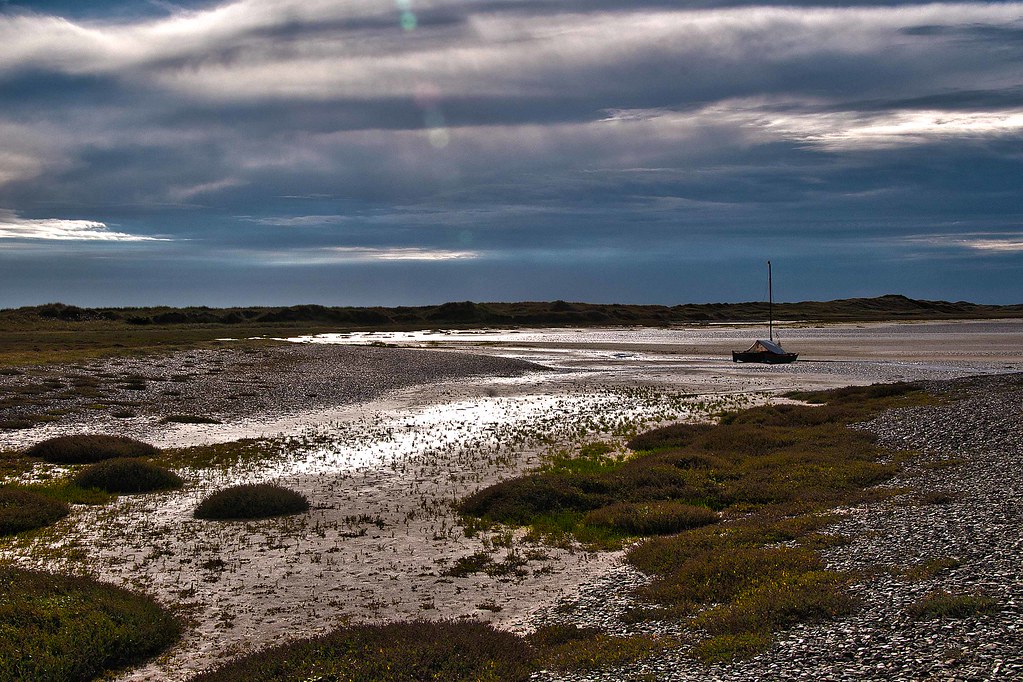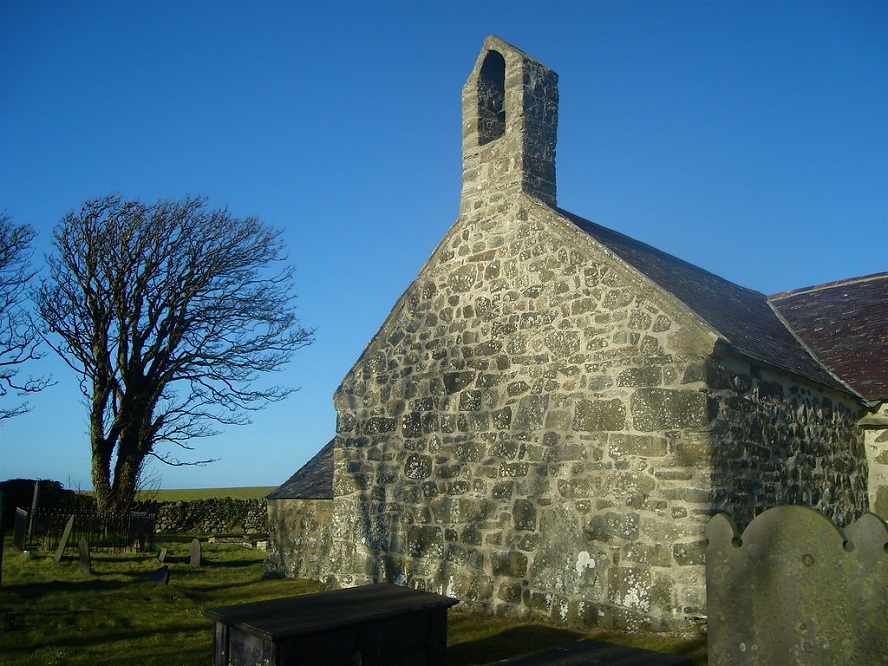Abermenai: The lost port of medieval Wales

Owain Jones
Abermenai was one of the most important ports of medieval Wales, lying at the south-western mouth of the Menai Strait which divides Môn from Arfon. Nothing today remains of it, and the area is instead dominated by the town of Caernarfon – itself a hugely significant place in the history of Wales.
Abermenai is now nothing but a long spit of sand dunes stretching south-eastward from Niwbwrch to face the eighteenth-century artillery fort of Caer Belan across the narrow mouth of the strait. But in the eleventh and twelfth century it was of central importance to the politics and economy of Wales.
Wales, and the Irish Sea world it faced, were very different in this period. The Hiberno-Norse town of Dublin dominated the area commercially and, through its large fleet, was also an important political player. No doubt this is why the port of Abermenai was so important in the life of Gruffudd ap Cynan, the king of Gwynedd who died in 1137. Gruffudd himself was raised in exile in Hiberno-Norse (that is Irish/Viking) Dublin – his mother, Ragnailt, was a member of the city’s royal dynasty, and Gruffudd himself was at least as much a Hiberno-Norse king as he was a Welsh one. His campaign to seize the kingship of Gwynedd from his Welsh and Norman rivals depended on the use of fleets, on Irish and Norse mercenaries, and on the support of both Irish and Hiberno-Norse rulers across the sea.
It is from Gruffudd’s biography, Vita Griffini filii Conani, that we get some of our best evidence for Abermenai’s importance. The work mentions the place six times – for example when Gruffudd returns once again from Ireland to attempt to seize Gwynedd from his rival, Trahaearn ap Caradog of Arwystli, he ‘seized the port of Abermenai, where he found Trahaearn ruling’. Abermenai was no mere ship-landing, then, but a port, and it is likely that its economic importance relied on its position as Gwynedd’s link into the lucrative trade routes of the Irish Sea world. These pathways of piracy and trade connected Ireland and western Britain with Scandinavia to the north and with France, Spain, and the Mediterranean world beyond.
Infighting
The importance of Abermenai is once again emphasised in the biography when it notes that, on his death, Gruffudd ap Cynan left the harbour tolls of the port of Abermenai to his wife, Angharad. Gruffudd’s bequest to his widow was an extremely important source of income, making Angharad an independent player in the Gwynedd that Gruffudd left after his death, a kingdom dominated by infighting between their sons. Her importance is reflected in the fact that Angharad is one of the few Welsh queens whose death is noted in the chronicle, Brut y Tywysogion, in 1162 – by which time she must have been of a fairly advanced age. She may even have commissioned the writing of her husband’s biography.
In the wars which followed Gruffudd’s death, Abermenai is again prominent. The Welsh chronicles tell us that in 1144, one of Gruffudd and Angharad’s sons, Cadwaladr, hired a mercenary fleet from king Ottar of Dublin to help him against his brother, Owain Gwynedd. It seems that the appearance of this large fleet, which landed at Abermenai, was enough to force Owain to negotiate, and the brothers came to terms. But the Dublin mercenaries were not satisfied with this peaceful resolution, deciding to hold Cadwaladr hostage. Cadwaladr had to pay for his freedom with two thousand slaves, and exchanged his liberty for theirs. After his release, the Welsh under his brother Owain attacked and drove away the Dublin fleet – loyalties, like fortunes, could shift quickly.
Slaves
The slaves Cadwaladr used to pay for his freedom highlight a particularly bleak aspect of the Irish Sea economy in these centuries – the slave trade. It seems to be the case that, rather than declining with the conversion of Norse communities to Christianity (as assumed in older scholarship), slavery in fact grew in its economic and political importance in the eleventh and twelfth centuries. One of the engines of this growth was the warfare in this period for control over Ireland between provincial high kings.
These rulers needed the support of the Hiberno-Norse fleets of ships controlled by towns such as Dublin and Limerick, and often, as with Cadwaladr, these fleets were paid in captive men and women. Slaves were taken to Scandinavia, Britain, and continental Europe, as well as being an important feature of the societies of Ireland and Wales. Their origins were mixed – we know that English, Welsh, Irish, and Hiberno-Norse people were enslaved, and Cadwaladr may well have enslaved Welsh people to pay his ransom.

Slavery declined in the course of the twelfth century, and Abermenai also seems to fade in importance as a port in this period. Its ferry crossing was in crown hands after the English conquest of Gwynedd, and it remained the site of an important ferry-crossing into the nineteenth century. It may have been the shifting coastlines and encroaching sand-dunes of the later middle ages – which stranded Harlech castle far from the sea, and preserved the princes’ court at nearby Rhosyr – which finally put paid to Abermenai as a port.
Nothing now remains of its former importance, and there is certainly the potential for further historical and archaeological investigation of Abermenai. But facing it, on the Arfon side of the Menai, the beautiful church of Llanfaglan may preserve some traces of the port.
Llanfaglan is the closest medieval church to Abermenai, and in the porch of the church is a medieval cross-slab which bears the image of a single-masted ship. Grave slabs carved with both a cross and a ship image are common from the Isle of Man to the Hebrides – that is, the seaborne world of warfare and trade of which Abermenai was a part. As far as I am aware, this is the only example of this type of monument in Wales. Its presence here, in the medieval church overlooking Abermenai, may be the last tangible trace of the lost port which once tied Gwynedd to the Hiberno-Norse world.
Support our Nation today
For the price of a cup of coffee a month you can help us create an independent, not-for-profit, national news service for the people of Wales, by the people of Wales.





It is interesting to note that slavery in western Europe long predates African slavery.Also those Welsh people who claim descent from Owain Gwynedd may also be descended from his slaves.
Erthygl dda.Good article
Another excellent article. Perhaps we could get a regular column for Owain Jones: Cymu’s best young historian.
100%⬆️
Erthygl ardderchog! Rhagor fel hyn, plîs, Nation.